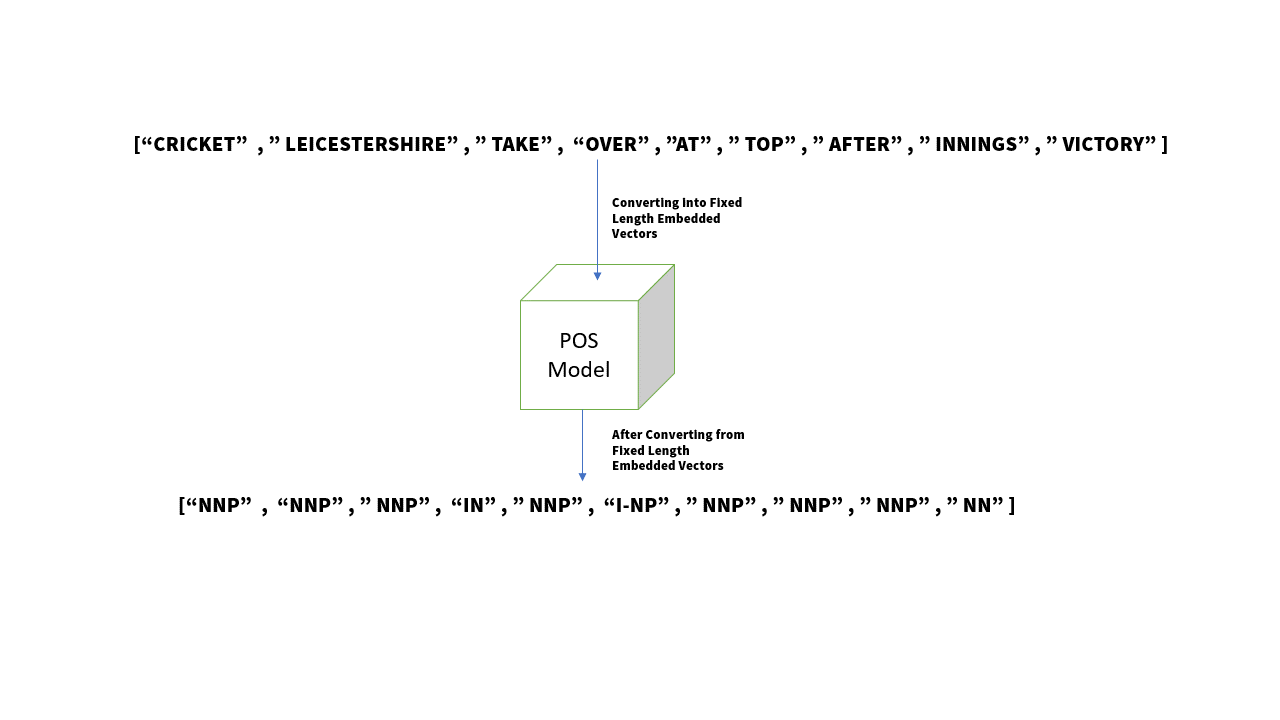In this Repository you will find 3 different models trained on the English CoNLL-2003 dataset, which can tag the sentences into their respective POS tags, Syntactic chunk tags, and NER tags.
The English CoNLL-2003 shared task data files which were present in the provided link contains four columns separated by a single space. Each word has been put on a separate line and there is an empty line after each sentence. The first item on each line is a word, the second a part-of-speech (POS) tag, the third a syntactic chunk tag, and the fourth the named entity tag.
Here, from the above we can see the structure of our dataset. Let, take the example of Sample 1 from where I have used Cricket as the Word, NNP as the POS tag, I-NP as the syntactic chunk tag, and O as the NER tag. In this way same like Sample 1 I have modeled the entire training, validation, and testing dataset.
There, are 3 files using which we can train, validate and test our model.
eng.testa – Dataset for validating the model.
eng.testb – Dataset for testing the model.
eng.train – Dataset for training the model.
I have created 3 different models for the different tasks thus I have used a simple deep learning model architecture to train the models. We can find the model's architecture inside the models.py file.
Model Summary:
- I have used an embedding layer that computes a word vector model for our words.
- Then I have added Dropout to avoid overfitting.
- Then an LSTM layer with a
Bidirectionalmodifier. - I have set the
return_sequences=Trueparameter so that the LSTM outputs a sequence, not only the final value as well as addedrecurrent_dropout=0.1. - After the LSTM Layer there is a Dense Layer (or fully-connected layer) that picks the appropriate tag. Since this dense layer needs to run on each element of the sequence, we need to add the
TimeDistributedmodifier. - In the last layer I have used Softmax function.
- During compiling the model I have used
optimizer='adam', loss='categorical_crossentropy'andmetrics=['accuracy']. - I have used
save_best_only=Trueto save the best model updates in the .h5 file.
To run this code in your local system you have to download this repository using-
git clone https://github.com/pranabsarkar/Conll_task.git
Now open the downloaded directory and install the required python packages using-
pip install -r requirements.txt
I have used my local system for training these deep learning models.
CPU: Intel® Core™ i5-8265U @ 1.60 GHz 1.80 GHz; RAM: 8 GB
-
We can use pre-trained word embedding’s like GloVe for better results.
-
During text processing we can convert all the words into lowercase.
-
If there is more training data the model can perform better.
-
We can fine-tune the hyper-parameters of our model to enhance the performance of our model.
-
We could have used different model architectures and compare the performances.
-
Introduction to the CoNLL-2003 Shared Task: Language-Independent Named Entity Recognition. Link: https://www.aclweb.org/anthology/W03-0419.pdf
-
Dataset Link: https://github.com/patverga/torch-ner-nlp-from-scratch/tree/master/data/conll2003
-
Keras Documentation. Link: https://keras.io/guides/
Name: Pranab Sarkar
Please feel free to add your input's :)

